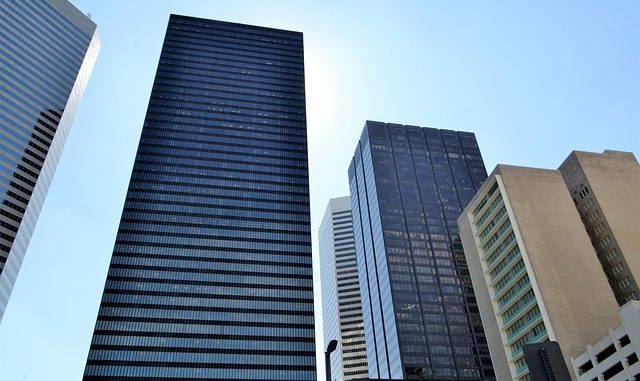
Commercial buildings require special considerations when it comes to electrical wiring. Most commercial buildings do not have the luxury of a wooden frame to run wires through, so other wiring methods must be used. Some of those are discussed below.
Conduit
A common method of electrical wiring in a commercial setting is by use of conduit. Conduits can be made of a variety of materials including steel, aluminum, or PVC depending on the application. For underground conduit runs or conduit embedded in concrete slabs, PVC conduit is used, as it will not rust or corrode. PVC conduit can also be found in areas where moisture, water, or chemicals may be present. These include many outdoor locations, such as a car wash or waste-water pump house. The main drawbacks to PVC include:
- Requires special tools to bend
- More expensive than other types of conduit
The next type of conduit, often called EMT, is a thin-walled metallic conduit made of steel. It is easy to bend, relatively inexpensive, and useful in most commercial settings. It can also be used in wet areas, as long as special rain tight fittings are used at the connection points. However, EMT should not be used in areas with potentially corrosive chemicals, as the conduit can degrade over time. EMT is typically used in machine shops, large stores, and offices. In hazardous locations, conduit with threaded ends may be required.
Rigid conduit, available in aluminum or steel, is thick walled and can be threaded, allowing for explosion proof installation. Rigid EMT can also be bent on-site but may require more powerful bending tools like a Chicago bender or a hydraulic bender. Threading gear will also be required, as each piece of pipe needs to be threaded on both ends. Rigid conduit can be found in fuel stations, refineries, and propane storage facilities.
Pulling wires through conduit
With the conduit system now in place, wires are pulled into them. For short runs, a steel fish tape may be used to pull a small string into the pipe, which is then used to pull a bundle of marked wires. For long runs of conduit, a vacuum blower can be used. A string is attached to a small foam disk, called a mouse, and then inserted into the end of the pipe. Finally, a vacuum nozzle pushes air down the pipe, sending the mouse and the string down it. The string can then be used to pull wire.
When using this method in pipes that run into the ground, water and dirt may get into them during installation. A simple trick used by pros includes attaching a bundle of rags to the string. The rags are pulled through the pipe, eliminating any risk of damaging insulation.
Cables
In some instances, armored cable may be used. This type of cable, known as teck cable, is available in nearly any size and features a core made of the desired number and sizes of wires, protective jacketing, flexible aluminum armor, and in some cases a weather-resistant exterior jacket. Teck cables can be pulled through conduit, cable tray, or be buried directly in the ground as long as the cable is rated for direct burial and certain burial depths are adhered to. Teck cables can also be installed in hazardous locations by using special explosion-proof cable fittings and approved sealing compounds. The main advantage to teck cable is its ease of installation and versatility. When using a cable tray system, cables can also be easily added or removed at any time.
With this basic knowledge of the types of electrical wiring methods used in commercial buildings, it is easy to select the best option for any installation.

